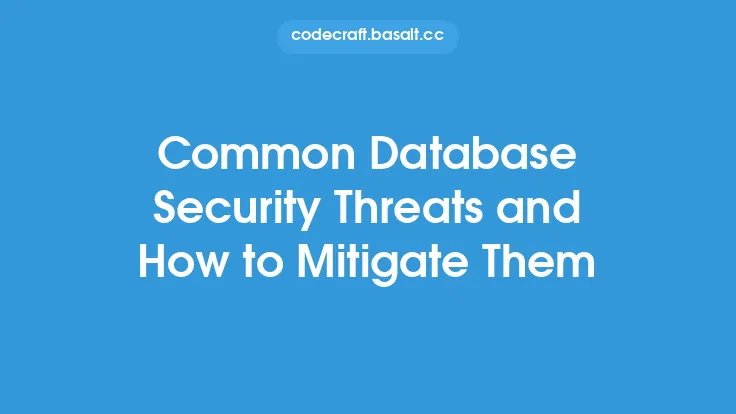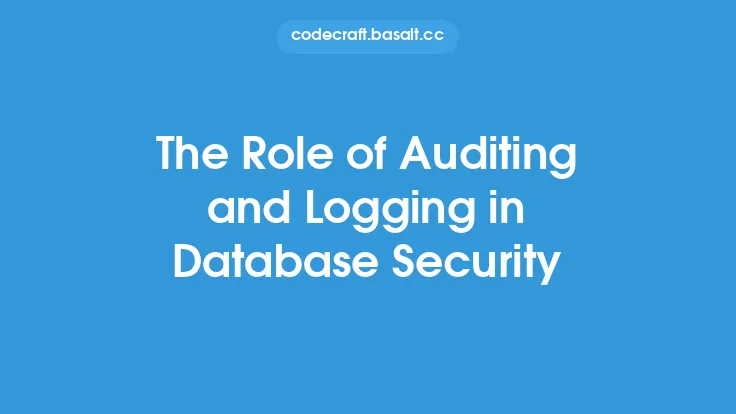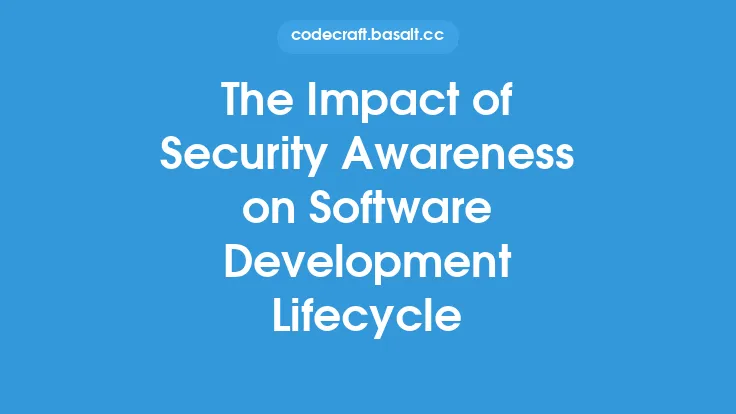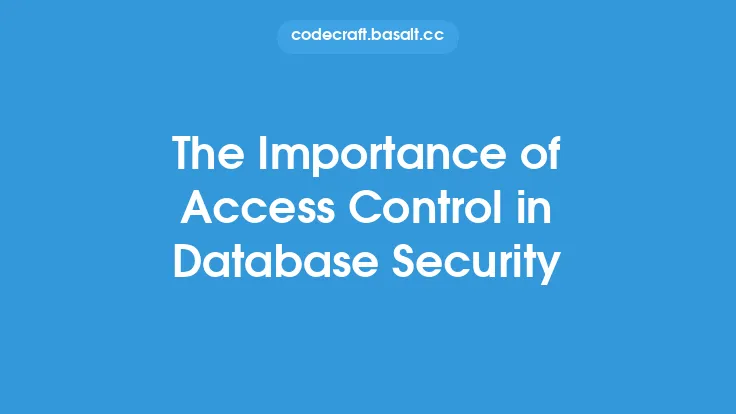SQL injection is a type of web application security vulnerability that allows an attacker to inject malicious SQL code into a web application's database in order to extract or modify sensitive data. This type of attack is particularly devastating because it can be used to gain unauthorized access to sensitive data, disrupt the normal functioning of the database, or even take control of the entire database. In this article, we will explore the impact of SQL injection on database security and discuss prevention strategies that can be used to protect against this type of attack.
What is SQL Injection?
SQL injection occurs when an attacker is able to inject malicious SQL code into a web application's database through user input fields, such as login forms or search boxes. This malicious code is then executed by the database, allowing the attacker to access or modify sensitive data. SQL injection attacks can be classified into several types, including classic SQL injection, blind SQL injection, and time-based SQL injection. Classic SQL injection involves injecting malicious SQL code into a database in order to extract or modify sensitive data. Blind SQL injection involves injecting malicious SQL code into a database in order to extract sensitive data, but without being able to see the database's error messages. Time-based SQL injection involves injecting malicious SQL code into a database in order to extract sensitive data by measuring the time it takes for the database to respond to different queries.
How SQL Injection Attacks Work
SQL injection attacks typically involve the following steps:
- An attacker identifies a vulnerability in a web application's database, such as a user input field that is not properly sanitized.
- The attacker injects malicious SQL code into the user input field, which is then executed by the database.
- The malicious SQL code is used to extract or modify sensitive data, such as user credentials or financial information.
- The attacker uses the extracted or modified data for malicious purposes, such as identity theft or financial fraud.
Impact of SQL Injection on Database Security
The impact of SQL injection on database security can be severe. SQL injection attacks can be used to gain unauthorized access to sensitive data, disrupt the normal functioning of the database, or even take control of the entire database. Some of the potential consequences of a SQL injection attack include:
- Unauthorized access to sensitive data, such as user credentials or financial information
- Disruption of the normal functioning of the database, resulting in downtime or data loss
- Theft of sensitive data, such as credit card numbers or social security numbers
- Modification of sensitive data, such as changing user credentials or altering financial information
- Takeover of the entire database, allowing the attacker to execute arbitrary SQL code and gain complete control over the database.
Prevention Strategies
There are several prevention strategies that can be used to protect against SQL injection attacks. Some of the most effective strategies include:
- Input validation and sanitization: This involves validating and sanitizing all user input data to ensure that it does not contain malicious SQL code.
- Parameterized queries: This involves using parameterized queries to separate the SQL code from the user input data, making it more difficult for an attacker to inject malicious SQL code.
- Stored procedures: This involves using stored procedures to encapsulate the SQL code and limit the amount of data that can be accessed by an attacker.
- Least privilege: This involves granting the web application the least amount of privileges necessary to function, reducing the amount of damage that can be done by an attacker.
- Regular security audits: This involves regularly auditing the database and web application for vulnerabilities and addressing any issues that are found.
Best Practices for Preventing SQL Injection
There are several best practices that can be followed to prevent SQL injection attacks. Some of the most effective best practices include:
- Using prepared statements with parameterized queries
- Validating and sanitizing all user input data
- Limiting the amount of privileges granted to the web application
- Regularly auditing the database and web application for vulnerabilities
- Keeping the database and web application up to date with the latest security patches
- Using a web application firewall to detect and prevent SQL injection attacks
Tools and Techniques for Detecting SQL Injection
There are several tools and techniques that can be used to detect SQL injection attacks. Some of the most effective tools and techniques include:
- Web application firewalls: These can be used to detect and prevent SQL injection attacks by analyzing incoming traffic and blocking any malicious requests.
- Intrusion detection systems: These can be used to detect SQL injection attacks by analyzing network traffic and identifying any suspicious activity.
- Penetration testing: This involves simulating a SQL injection attack on the web application in order to identify any vulnerabilities and address them before an attacker can exploit them.
- Vulnerability scanning: This involves using automated tools to scan the web application and database for vulnerabilities and addressing any issues that are found.
Conclusion
SQL injection is a serious threat to database security that can have devastating consequences if left unchecked. By understanding how SQL injection attacks work and following best practices for prevention, such as input validation and sanitization, parameterized queries, and least privilege, organizations can protect their databases from these types of attacks. Additionally, using tools and techniques such as web application firewalls, intrusion detection systems, penetration testing, and vulnerability scanning can help detect and prevent SQL injection attacks. By taking a proactive approach to database security, organizations can help ensure the integrity and confidentiality of their sensitive data.





